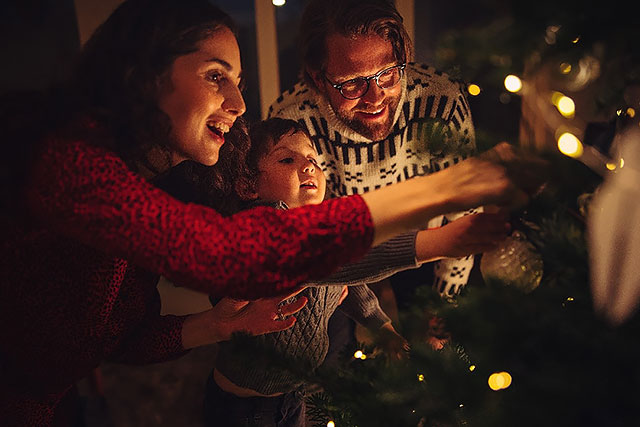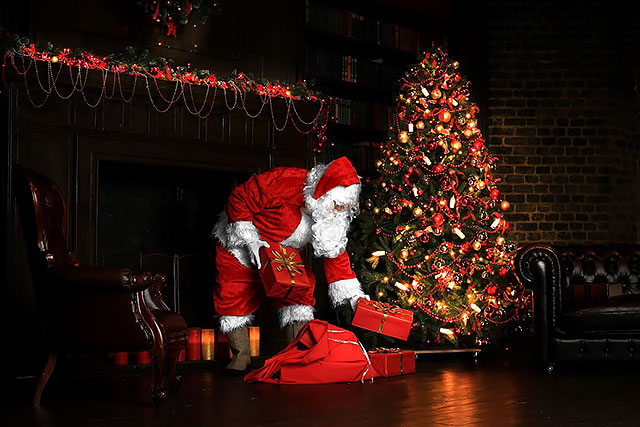The history of timekeeping is as old as the history of mankind. We offer you a brief insight into the origins of the clock and show you what secrets are hidden in this everyday object that sets the pace of our lives.
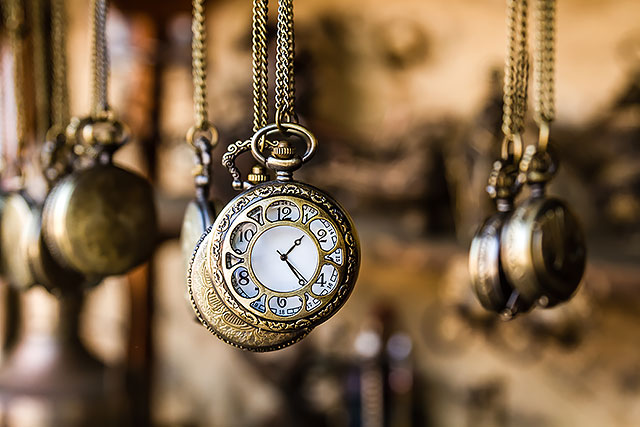
Table of contents
- What is the significance of the clock?
- From its beginnings to the present day: the development of the clock
- Ancient time measurement
- Time measurement in the middle ages
- The further development of timekeeping in modern times
- Time Measurement in the Modern Age
- The construction of a clock: an overview of the most important components
- Energy Storage
- Gear Train
- Escapement
- Time Display
- Special Clocks and Fixtures
- FAQ: Key facts about clocks
What is the significance of the clock?
The clock is a time-measuring device: it shows what hour, minute and second of the day we are in; as a stopwatch, it can measure periods of time and as an alarm clock it can bring people out of sleep. Archaeological finds suggest that people have been striving to measure time since time itself began. In the early days of mankind, people used astronomical phenomena as a guide, read the time of day with the help of simple shadow clocks and used the first calendars for religious purposes. What is particularly interesting, however, is the fact that time measurement developed independently in all cultures. It seems to be an indispensable basic need for human existence to determine the current time and to measure time intervals.
Life without time measurement has become unimaginable in our society. And even if the smartphone is gradually replacing the wristwatch, timepieces of all kinds are everyday companions that we cannot and do not want to do without. In the world of work, production processes, leisure time - without time measurement, we would not be able to show up on time for meetings, engage in global trade or make appointments. But since time reminds people of its transience, we have an ambivalent relationship with it and would like to use the time available to us as "profitably" as possible.
From wristwatches and hourglasses to wall clocks or handmade cuckoo clocks, timepieces have also become collectors' items; ultimately, there's no escaping the magic and aesthetics of this mysterious everyday object.
From its beginnings to the present day: the development of the clock
Ancient time measurement
The sky has always been an important timekeeper: the sun and the moon divided the day into two parts. It is known from ancient Egypt that people set up shadow clocks on which the days were divided into hours. However, these shadow clocks suffered from the disadvantage of the varying lengths of shadow lines over the course of the year. Diagonal star clocks, which made use of the movements of the constellations, had a religious function: with their help, the deceased should be able to ascend to heaven more easily.
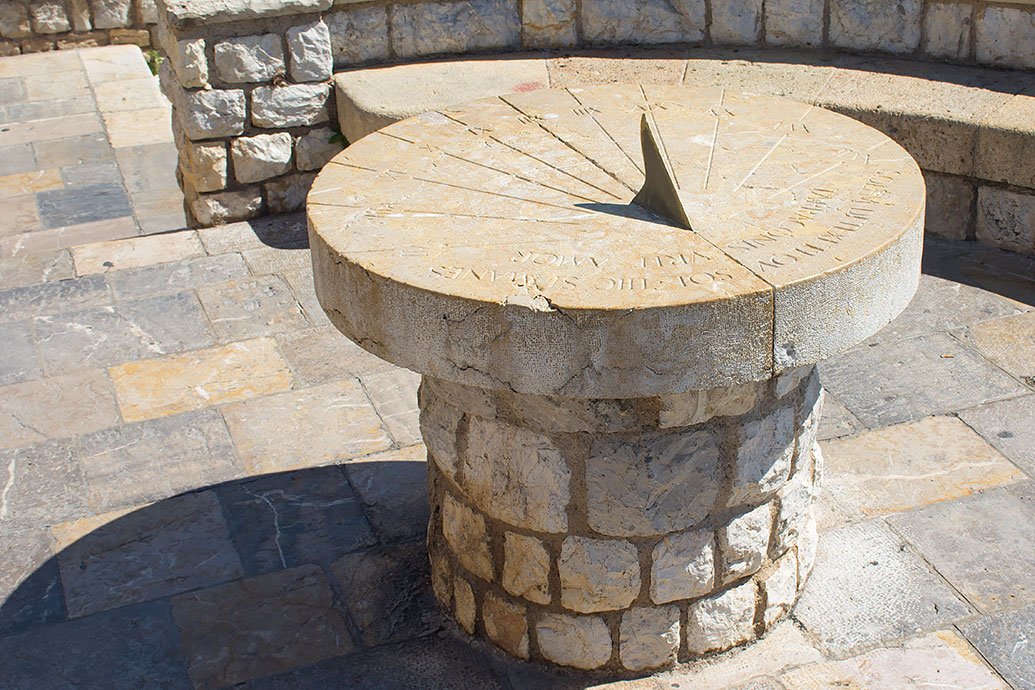 In ancient times, the time of day was indicated with sundials.
In ancient times, the time of day was indicated with sundials.The water clock was developed in the 16th century BC: water draining from a vessel showed the time - a method that works completely independently of the season or light. Similar water clocks were also used in Babylonia. In ancient Greece, water clocks were used in court to limit speaking time. "Time has run out" - this phrase, still in use today, refers to the water clock.
The Romans adopted the principles of water clocks and sundials from other cultures. The Moors and Arabs also used this technique but continued to develop it.
Time measurement in the middle ages
With the Roman Empire, the knowledge of ancient timekeeping perished. But even in the Middle Ages, scientists worked on the further development of sundials and water clocks and invented new time-measuring instruments. Easily available, relatively reliable and independent of daylight, for example, was the candle clock, which was developed around 900 AD. Candles of the same length and in certain shapes were provided with markings that showed the elapsed time as they burned.
The most important time indicators in the Middle Ages were bells on the town and church towers. We can well imagine how loud bell ringing announced the opening of a market, court times and of course prayer times in monasteries or masses in cathedrals. The invention of the escapement made it possible to announce these events, which were essential for medieval life, at the right time, and with it, the development of the wheel clock first mentioned in a document in 1335.
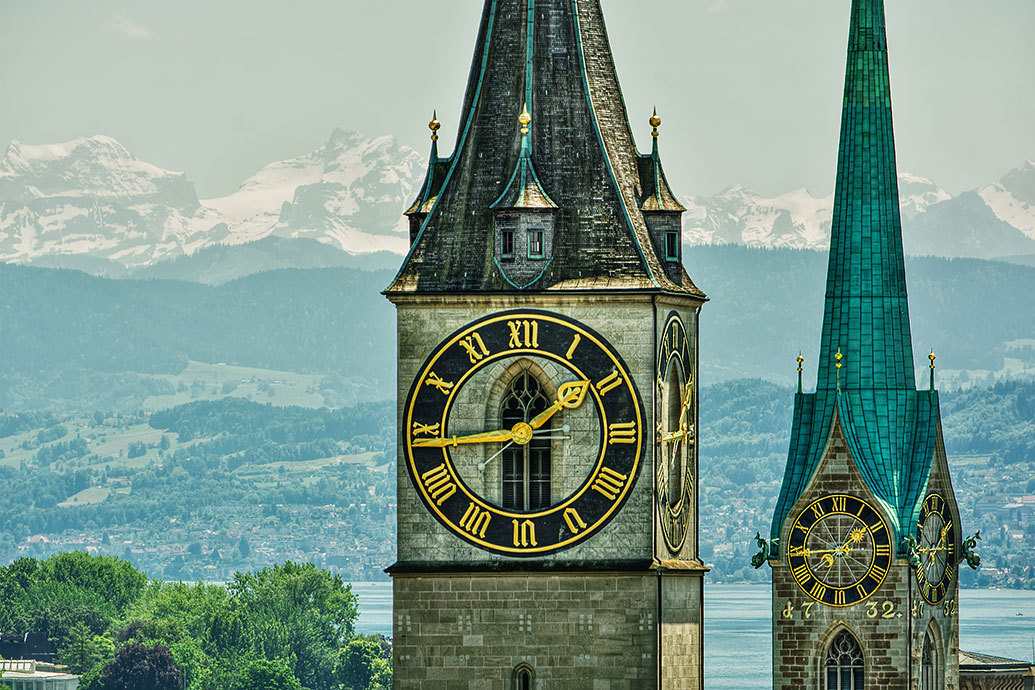 Tower clocks were the most important timekeepers in the Middle Ages.
Tower clocks were the most important timekeepers in the Middle Ages.It was the clocks in the doormen's rooms that synchronised medieval society with their alarm and the striking of the hours. With the later emergence of tower clocks, the general public was finally able to tell the time. Only a few monarchs and wealthy citizens owned a domestic clock - mostly complicated astronomical clocks that were popular for representative reasons. From the 15th century onwards, clockmakers organised themselves into independent guilds.
It was not until the 14th century that the hourglass was also developed, which served to measure shorter intervals of time.
The further development of timekeeping in modern times
Even during the Renaissance, timepieces were continually being developed. The fact that the sensitive movement was now hidden in a case to protect it from dirt resulted in watches becoming more and more of a fashion accessory. Thanks to new materials, finer tools and the invention of the spring drive, watches could also be made much smaller.
As the first pocket watches were developed, international competition arose among clockmakers, who outdid each other in the production of technical and artistic masterpieces. Even minute and second hands were now built into the timepieces and made it possible to measure time more precisely.
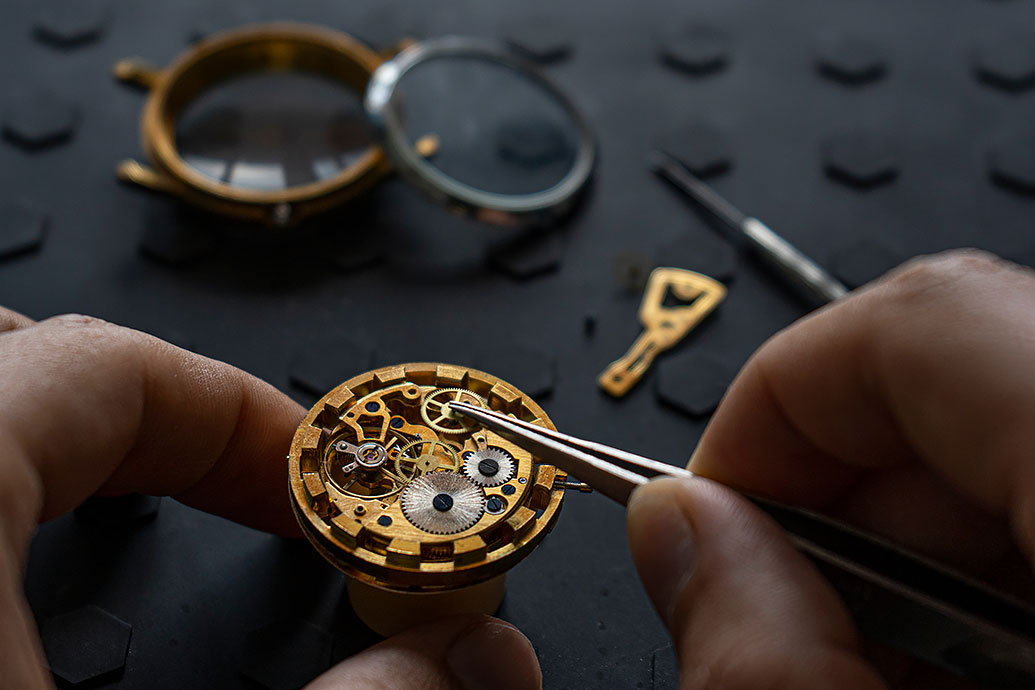 The production of watches became progressively more elaborate and technically sophisticated.
The production of watches became progressively more elaborate and technically sophisticated.Watchmaking took a different turn in America: from the beginning of the 19th century, the industrial production of pocket watches began here. The clock became a mass article and was available to more and more people from different social classes.
In the 16th century, none other than Galileo Galilei described the laws of pendulum motion and developed a mechanism with a pendulum and free escapement - an idea pursued at the same time by Christiaan Huygens, a Dutch scientist whose design eventually gave rise to the first pendulum clock. This development made extremely precise timekeeping possible. The Netherlands and England were now the most important centres of clockmaking.
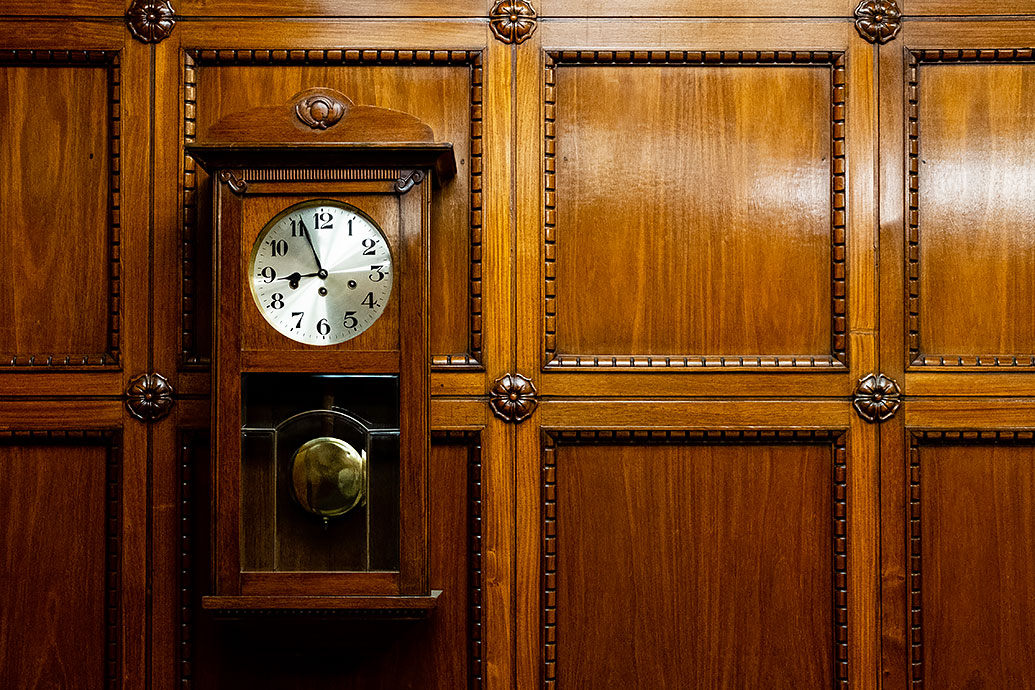 Pendulum clocks were widespread in households.
Pendulum clocks were widespread in households.In the 18th century, watches were no longer only in demand as objects of art. The colonial powers actively traded in goods that they imported from overseas to Europe. As such, Maritime shipping required precise timekeeping, which was finally provided by the marine chronometer developed in 1759.
Time Measurement in the Modern Age
In the age of industrialisation, clocks also became an object of mass production. In Germany, the Black Forest became the manufacturing centre for clocks and watches.
To make a clock run, it needs a source of energy. Since industrialisation also led to the implementation of a nationwide power supply, the idea of using an electric motor to drive clock movements was obvious. Motors were used to wind movements in tower clocks, to drive escapements with electromagnetic pulses or to synchronise clock systems used in railway traffic.
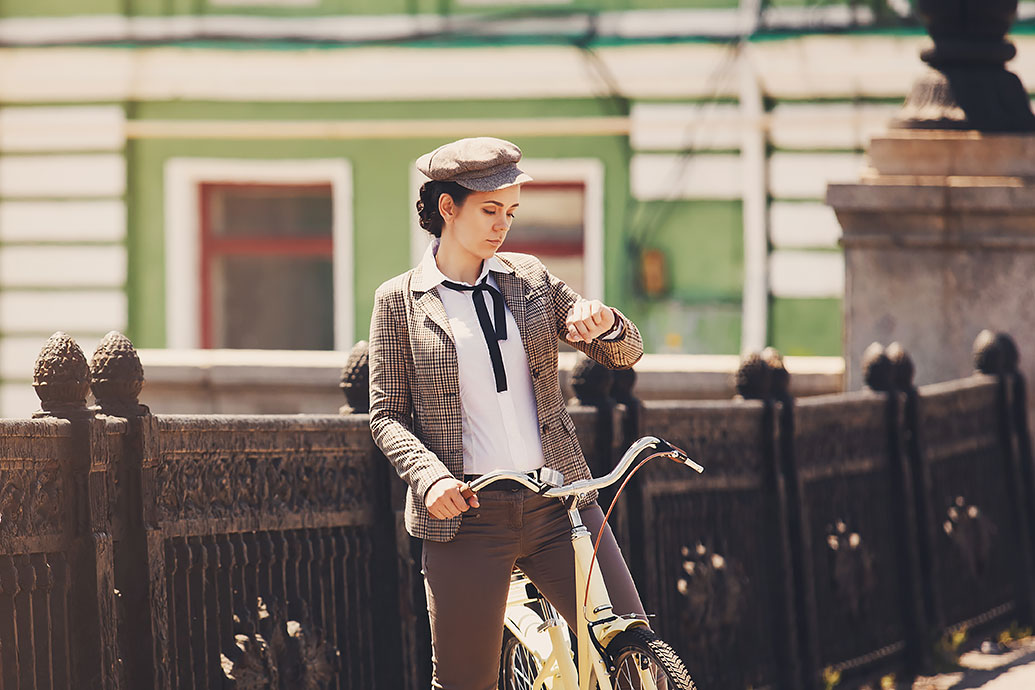 Wristwatches gradually evolved into pieces of jewellery as well.
Wristwatches gradually evolved into pieces of jewellery as well.But when did wristwatches become fashionable? The first jewellery watches, which resemble today's wristwatches, were already made in the early 19th century. In the navy, in the military in general, among aviators and athletes, the advantages of the compact wristwatch were quickly recognised. When John Harwood invented the automatic watch in 1923 and the Rolex company launched the legendary Oyster, the first waterproof wristwatch, the triumph of the wristwatch was unstoppable. As early as the 1930s, two-thirds of all timepieces sold were wristwatches.
Other milestones in the development of modern timekeeping were the invention of the quartz clock in 1921 and the atomic clock, first used in 1949, which set the standard with its impressive accuracy. Since the 1960s, radio-controlled clocks have also enjoyed great popularity.
The construction of a clock: an overview of the most important components
Energy Storage
Clocks are usually driven either by weights, a mainspring or electrically with the help of a direct power supply from the electricity grid or a battery. Weight drives are easy to construct and are consequently considered the simplest form of energy supply. However, their running time is limited depending on the mass. Wheel clocks driven by weights must be wound either manually or electrically. The development of steel watch springs made it possible to reduce the size of the movement. To ensure that the timepiece runs smoothly, it is necessary to install an escapement. Modern wristwatches are powered by replaceable button cells. Solar cells can be used to recharge a battery regularly.
Gear Train
The gear train of a clock is the totality of the gears and pinions in the movement. The individual parts of the gear train can be made of wood, metal, plastic or ceramic.
The gear train transmits the energy from the drive via the escapement to the regulator of the watch. The various gear wheels rotate at different speeds. Mechanical watches usually have a striking mechanism that triggers an acoustic signal such as a chime or a gong. Calendar movements, chronograph movements or moon phase movements are additional movements that are used in more complicated timepieces.
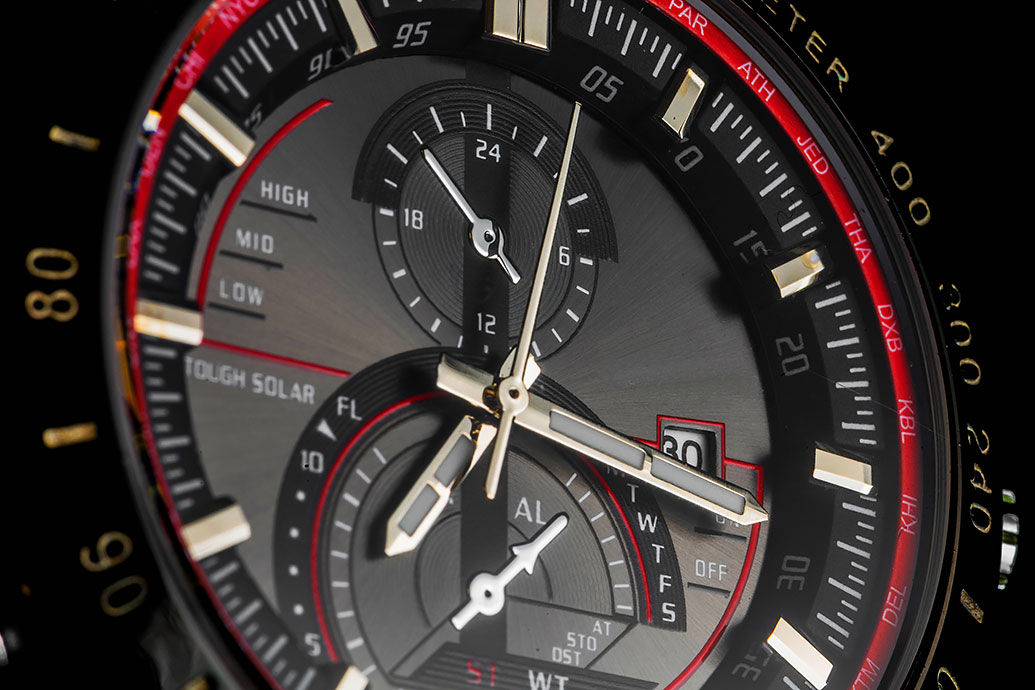 Chronographs are equipped with many other functions in addition to timekeeping.
Chronographs are equipped with many other functions in addition to timekeeping.Escapement
In mechanical clocks, the escapement ensures even timekeeping. The escapement ranges from the verge and foliot mechanism to the pendulum. The quality of the escapement often reflects the skills of a watchmaker. Many clockmakers devised complicated constructions to protect the sensitive escapement from external influences.
Time Display
What could be more beautiful than a well-designed display on which the elegant hands move to tell the observer the current time at first glance? Conventional time is displayed on a dial. Most wristwatches have at least an hour and a minute hand, but many also have a second hand and additional time displays for determining the date, the moon phase or other parameters. Dials are usually round or square, and the dial ring makes it easier to read the time. The design of dials is subject to fashion and often plays a major role in the decision to buy a watch. In addition to dials and hands, there are of course also digital time displays and other artistic-creative solutions that allow the viewer to see the time.
Special Clocks and Fixtures
Over the centuries, clockmakers and inventors have come up with numerous additional devices to complement the classic clock. During the Renaissance, for example, automata were in vogue - figurative representations that were triggered and driven using clockwork. The automata usually fulfilled an artistic function and enjoyed great popularity.
The musical chime is also regarded as a secondary feature, which today can be seen as a gimmick, but at the time of its creation was a source of great fascination.
Even today, chimes in church tower and town hall clocks remain popular tourist attractions in some cities. The hourly chimes of large tower clocks are produced by striking mechanisms.
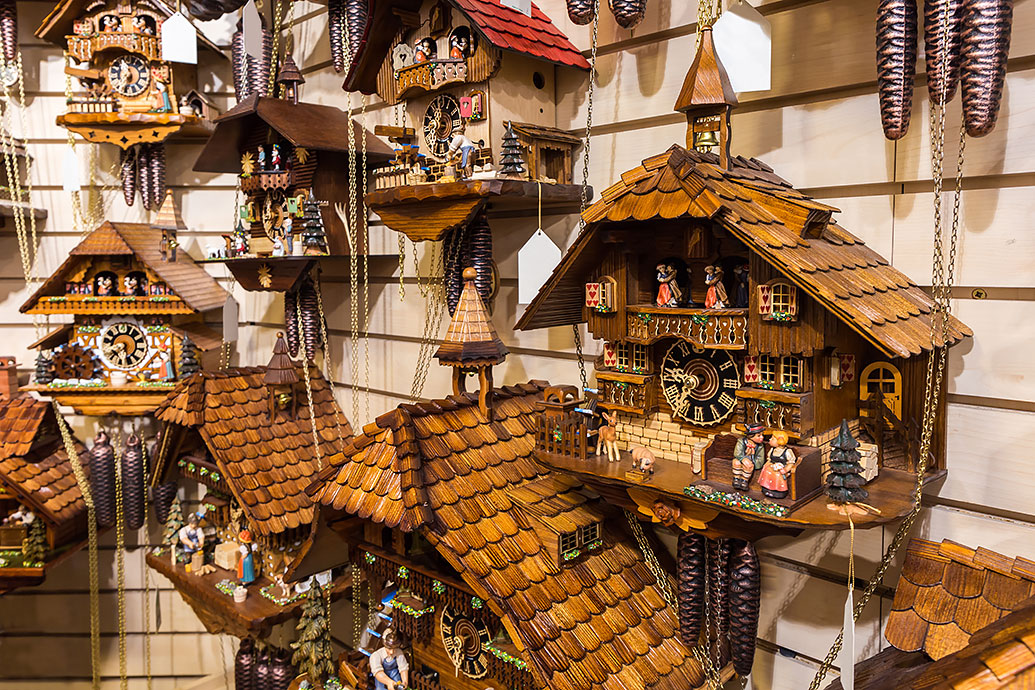 Black Forest cuckoo clocks are very popular all over the world because of their chiming mechanism and the moving figures, which are made in Val Gardena.
Black Forest cuckoo clocks are very popular all over the world because of their chiming mechanism and the moving figures, which are made in Val Gardena.A special clock that fascinates a large number of collectors worldwide because of its striking mechanism is the cuckoo clock. The Black Forest is the traditional manufacturing region for cuckoo clocks. The elaborately decorated clocks are usually available as wall clocks. The clock is named after a small wooden cuckoo figure that peeks out of a window or door every hour on the hour and emits a cuckoo call that is triggered by small organ pipes or whistles inside the clock. Another characteristic feature of the cuckoo clock is the pendulum movement with a chain hoist.
Traditionally, hand-carved wooden figures from Val Gardena are used for Black Forest cuckoo clocks, which are popular for their high quality and artistic appeal.
FAQ: Key facts about clocks
The term " Uhr " can be traced back to the Middle High German ūr(e)/or ("hour/clock") and has the same roots as the English word "hour" or the French term "heure".
People have been trying to divide the day and measure time since time immemorial. However, exact time measurement has only been possible since the invention of the clockwork escapement around the year 1370. Time measurement paved the way for modern society.
The Sumerians, the people of Ancient Egypt and China, marked lines on the ground, which they used to tell the time. Archaeological finds prove that the Sumerians divided the day into twelve hours. But vessels with water or the position of the sun were also used to measure time.
Since the beginning of time, people have based their attempts to measure time on astronomical phenomena. For example, the highest position of the sun indicates when it is noon. When developing the clock, it was possible to orientate oneself according to this fixed point, among other things.
Measuring time was a matter of survival for people in pre-modern societies. People also measured and still measure time for religious reasons, to limit the time of speeches, to organise production and work, and generally to synchronise society.
In a digital clock, an oscillating quartz sets the time. Electrical voltage causes the quartz to oscillate. These oscillations can be translated into a second cycle and are transmitted to the time display with the help of an electrical pulse.
The invention of the hourglass dates back to the early 14th century. The 1338 fresco "Allegory of Good Government" by the Italian painter Ambrogio Lorenzetti, which can be seen in the Palazzo Pubblico in Siena, shows a frame consisting of two glass bulbs with sand trickling through the middle.
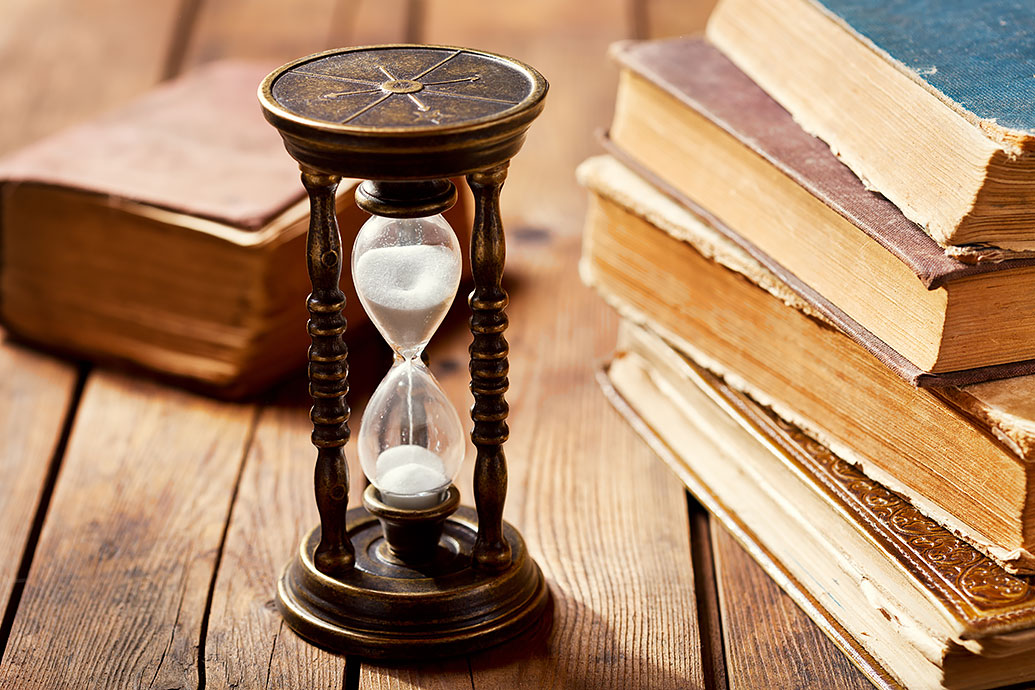 With the invention of the hourglass, shorter periods of time could be measured more accurately.
With the invention of the hourglass, shorter periods of time could be measured more accurately.It is known that sundials had been used to measure time in Egypt as early as around 5,000 BC. But other pre-Christian cultures also developed the sundial independently. As shadow casters, sundials were dependent on the calendar date and how they were constructed.
Plato attempted to build an alarm clock with the help of water bowls that would wake the sleeper with a whistling sound. Leonardo da Vinci's alarm clock, on the other hand, could pull the covers off the sleeping person. The first alarm clock comparable to those used today was invented in 1787 by American clockmaker Levi Hutchins.
The invention of the quartz clock is attributed to Canadian physics engineer Warren Alvin Marrison, who presented a new type of clock in 1927: a quartz with a resonance of 50,000 hertz regulated the electronic oscillating circuit of this timepiece, which underwent numerous further developments and improvements in the following years.
The most accurate clock in the world is the "caesium fountain NPL-CsF2". It is located at the NPL, the UK's national physics laboratory, which is in southwest London. The clock is so accurate that it would only be wrong by one second at most in 729,325,216 years.
Since 1980, clocks in this country have been changed by one hour once in spring and once in autumn: On the last weekend in March, daylight saving time begins, which differs by one hour from Central European Time (CET). In 1978, the German Bundestag passed the time law that officially introduced daylight saving time.

